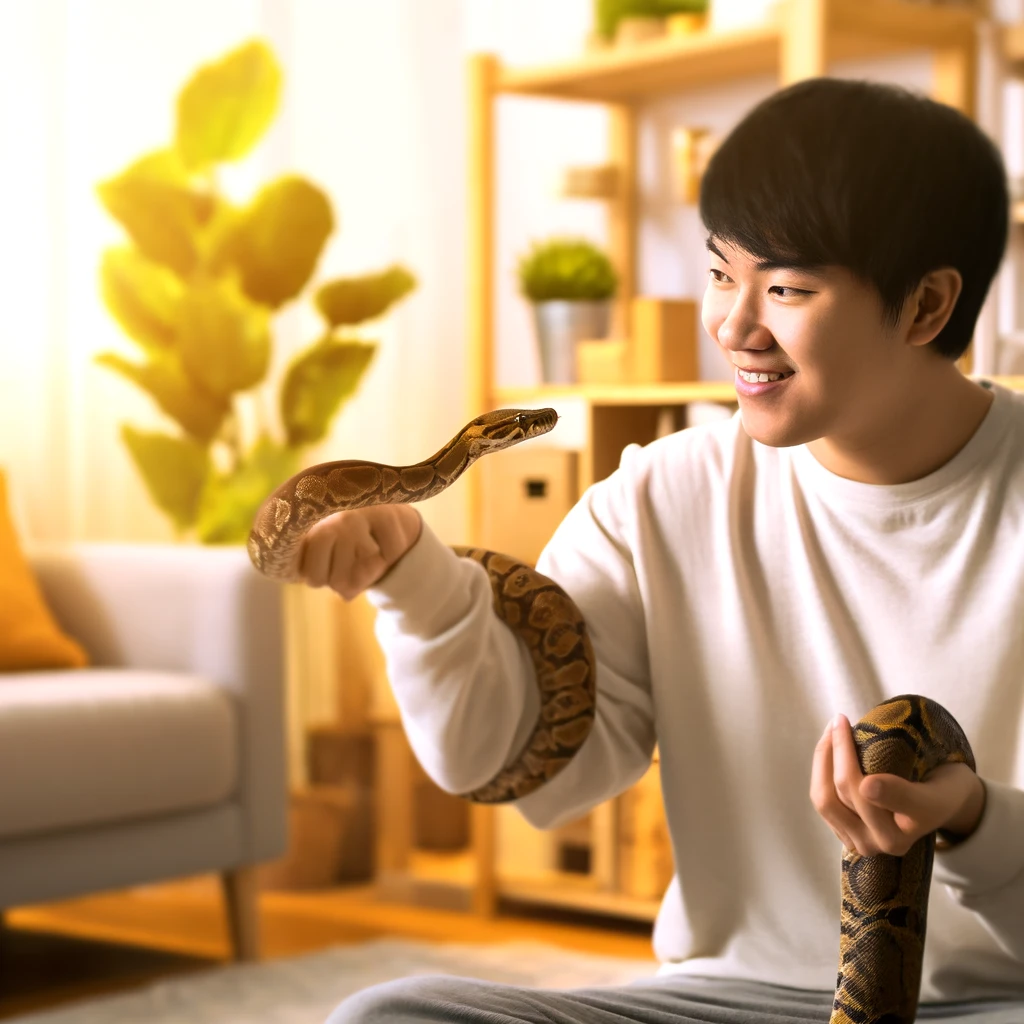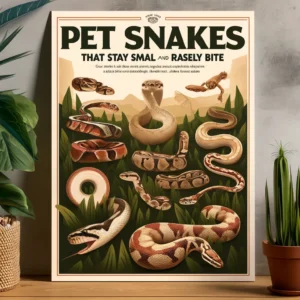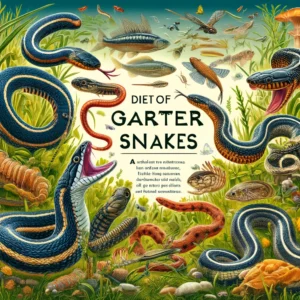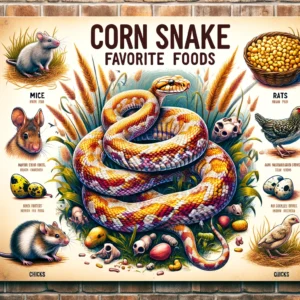Corn snakes are one of the most popular types of snakes kept as pets, primarily because of their docile nature and relatively easy care. When it comes to the behavior of male and female corn snakes, the differences are generally subtle and often more influenced by individual personality than by gender. However, there are a few behavioral traits and biological differences that can be observed:
General Behavior
Both male and female corn snakes have similar temperaments. They are known for being docile and rarely aggressive, which makes them excellent pets, especially for beginners. They can be shy and may hide frequently, but with regular handling, they usually become more comfortable being out in the open or interacting with humans.
Mating Behavior
The most significant behavioral differences between male and female corn snakes arise during the mating season, which typically occurs in the spring following a period of brumation (a hibernation-like state).
- Males: Male corn snakes become more active during the mating season as they search for females. They may show more aggressive behavior during this time, such as more vigorous movement and increased escape attempts. Males also engage in combat with other males to compete for mating opportunities.
- Females: Female corn snakes might appear more lethargic during the breeding season, especially after mating. They are generally receptive to the advances of males but do not engage in the searching or competitive behaviors seen in males.
Feeding Behavior
There is no significant difference in feeding behavior between male and female corn snakes outside of the breeding season. Both sexes can exhibit changes in appetite around the time of brumation and breeding:
- Brumation: Both males and females may refuse food as they prepare for brumation in colder months.
- Post-Mating: Females may experience decreased appetite as they prepare to lay eggs.
Size and Growth
While not directly a behavior, size can influence certain behavioral aspects, such as hiding or the types of enclosure enrichments they interact with.
- Males: Tend to be slightly longer and more slender than females.
- Females: Are generally shorter and girthier, which is related to their reproductive role of carrying eggs.
Territoriality
Corn snakes are not particularly territorial, but males might display more territorial behavior than females during the mating season. Such behavior usually subsides following the end of the mating period.
Handling and Interaction
Both male and female corn snakes typically tolerate handling well. Individual differences in temperament can make some snakes more tolerant than others, but these differences are not necessarily linked to the snake’s gender.
The mating season for corn snakes is an important period that typically occurs in the spring. Understanding this process can be crucial for snake owners, especially those interested in breeding their pets. Here’s a detailed look at the mating season for corn snakes:

Timing
Corn snakes usually begin their mating season in the spring, following a period of brumation during the winter months. Brumation is similar to hibernation and involves a decrease in physiological activities like metabolism. This period usually lasts from around November to February, depending on the climate and conditions in captivity. Once the snakes come out of brumation as temperatures warm up, their reproductive systems activate, and they start showing interest in mating.
Pre-Mating Behavior
Before mating, both male and female corn snakes undergo several behavioral changes:
- Increased Activity: Males become more active as they search for females. This behavior can involve more frequent movement within their enclosures and a heightened response to external stimuli.
- Appetite Changes: Both sexes might experience changes in appetite. Males often show decreased interest in food due to their focus on finding a mate, while females might eat more to prepare for the energy demands of producing eggs.
- Scent Trailing: Males can detect female pheromones, which females release to indicate their readiness for mating. Males follow these scent trails to locate females.
Mating Process
The actual mating process for corn snakes involves several steps:
- Courtship: The male approaches the female and performs a series of movements to signal his interest. This may include aligning his body alongside hers and quivering or gently rubbing against her.
- Mating: If the female is receptive, the male will wrap his tail around hers to align their cloacas — the vent from which snakes excrete and reproduce. The male then extends his hemipenes (reproductive organs) and inserts them into the female’s cloaca to transfer sperm.
- Post-Mating: After mating, males typically move on and may mate with other females available in the area. Females, however, begin the process of egg development and eventually lay eggs about one to two months after mating.
Egg-Laying
Female corn snakes are oviparous, meaning they lay eggs rather than giving birth to live young:
- Nesting: Females seek out a safe, hidden spot within their environment to lay their eggs. This could be under substrate material or within a secluded part of their enclosure.
- Incubation: The eggs require incubation for about 60 to 65 days. In captivity, breeders often incubate eggs in controlled conditions using incubators to ensure the right temperature and humidity.
- Hatching: Baby corn snakes use a specialized egg tooth to break out of their eggshells. Once hatched, they are fully independent and do not require parental care.
Considerations for Breeders
If you’re considering breeding corn snakes, it’s important to provide an optimal environment that mimics their natural conditions as closely as possible. This includes managing temperatures to simulate seasonal changes for brumation and creating a stress-free environment to support healthy breeding behaviors.
Understanding and respecting the natural cycles of corn snakes not only facilitates successful breeding but also ensures the health and well-being of the snakes throughout the process.
Essential requirements for mating corn snakes
| Requirement | Description |
|---|---|
| Age of Sexual Maturity | Corn snakes are ready to breed at about 2-3 years of age. |
| Brumation | A 2-3 month cooling period during winter, with temperatures around 50-55°F (10-13°C) and reduced light exposure. |
| Post-Brumation Warming | Gradually increase temperature and light exposure to bring snakes out of brumation and resume regular feeding. |
| Health Check | Ensure both male and female are healthy, free from parasites, and have no significant health issues. |
| Feeding Before Breeding | Feed well before brumation and after warming up post-brumation to ensure snakes are nutritionally prepared for breeding. |
| Introduction to Mate | Introduce the male to the female’s enclosure, monitor interactions for compatibility and signs of readiness to mate. |
| Mating Observation | Look for signs of mating such as the male wrapping around the female and alignment of cloacas. |
| Post-Mating Care | Separate the snakes after mating; provide the female with an optimal laying environment such as a nest box with moist sphagnum moss. |
| Egg Incubation | Incubate eggs at 78-82°F (25-28°C) with 70-90% humidity for approximately 60-65 days until hatching. |
| Frequency of Breeding | Limit breeding to once a year to maintain female health and vitality. |
FAQs
1. When is the best time to breed corn snakes?
The best time to breed corn snakes is in the spring, following a period of brumation during the winter. This mimics their natural cycle in the wild, where they become sexually active after emerging from hibernation-like conditions.
2. How do I know if my corn snakes are ready to breed?
Male corn snakes will often show increased activity and may refuse food due to their focus on finding a mate. Females ready to breed will often be receptive to a male’s advances and may also show a decrease in activity after mating.
3. What is brumation and how do I prepare my corn snakes for it?
Brumation is a period of dormancy similar to hibernation. To prepare corn snakes for brumation, gradually lower their enclosure temperature to about 50-55 degrees Fahrenheit (10-13 degrees Celsius) and reduce the photoperiod to mimic winter-like conditions. Stop feeding them about two weeks before the cool-down period to clear their digestive systems.
4. How long does brumation last, and what comes next?
Brumation typically lasts for 2-3 months. After this period, slowly increase the temperature and light cycle to “wake” the snakes. Resume feeding to get their metabolism back to normal before introducing them for mating.
5. How do I pair corn snakes for mating?
Choose male and female snakes that are healthy and have reached sexual maturity, which usually occurs around two to three years of age for corn snakes. Introduce the male to the female’s enclosure and monitor their interactions to ensure there is no aggression.
6. What should I do after my corn snakes mate?
After mating, separate the male and female. Provide the female with a nesting box filled with moistened sphagnum moss or vermiculite to lay her eggs. This box should offer a secure and humid environment for egg deposition.
7. How do I care for the eggs?
Corn snake eggs should be incubated at a steady temperature of 78-82 degrees Fahrenheit (25-28 degrees Celsius). Humidity should be maintained at 70-90%. Eggs typically hatch after about 60-65 days.
8. What are some common issues during breeding?
Common issues include refusal to mate, aggression between snakes, infertility of eggs, and health problems in females post-laying. Ensure that both snakes are healthy and well-fed before the breeding season and consult a reptile veterinarian if problems persist.
9. Can I breed corn snakes more than once a year?
It’s possible, but not recommended to breed corn snakes more than once a year. Repeated breeding can deplete the female’s health, leading to fewer eggs and lower hatch rates.
10. Do corn snakes show parental care?
No, corn snakes do not show parental care. Once the eggs are laid, the female’s role is complete, and the eggs will incubate independently until hatchlings emerge.

Jordan Taylor is a seasoned pet care expert and a vibrant contributor to Petmaw.com. With over a decade of experience in veterinary science, Jordan brings a wealth of knowledge and a deep passion for animals to every article. After earning a degree in Veterinary Medicine from the University of Alaska Anchorage, Jordan spent several years working in a busy veterinary clinic, where they honed their skills in pet nutrition, behavior, and wellness.
Jordan’s love for animals isn’t just professional; it’s a fundamental part of their life. Home is shared with three rescue Sloth, two cats, and a small flock of backyard chickens, each with their own rescue story and special place in Jordan’s heart. This personal connection to animals shines through in Jordan’s writing, making their advice not only expert but also empathetic and practical for pet owners.
At Petmaw.com, Jordan is dedicated to providing pet owners with the latest research, trends, and tips in pet care, from innovative feeding strategies to understanding the subtle signs of pet health issues. Whether you’re a seasoned pet owner or new to the pet parenting world, Jordan’s insights aim to enhance the well-being of pets and deepen the human-animal bond.
In their spare time, Jordan is an avid hiker, often found exploring the trails with their dogs. They also volunteer at local animal shelters, offering their expertise and helping animals in need find forever homes. Jordan’s commitment to animal welfare and passion for sharing knowledge makes them a cherished member of the Petmaw.com family and a trusted guide for our readers.






as soon as I noticed this internet site I went on reddit to share some of the love with them.
Enjoyed studying this, very good stuff, appreciate it.
Just a smiling visitor here to share the love (:, btw outstanding design.
I was able to find good advice from your blog articles.
Spot on with this write-up, I truly think this website wants far more consideration. I’ll in all probability be once more to read rather more, thanks for that info.
Perfect work you have done, this web site is really cool with excellent info .